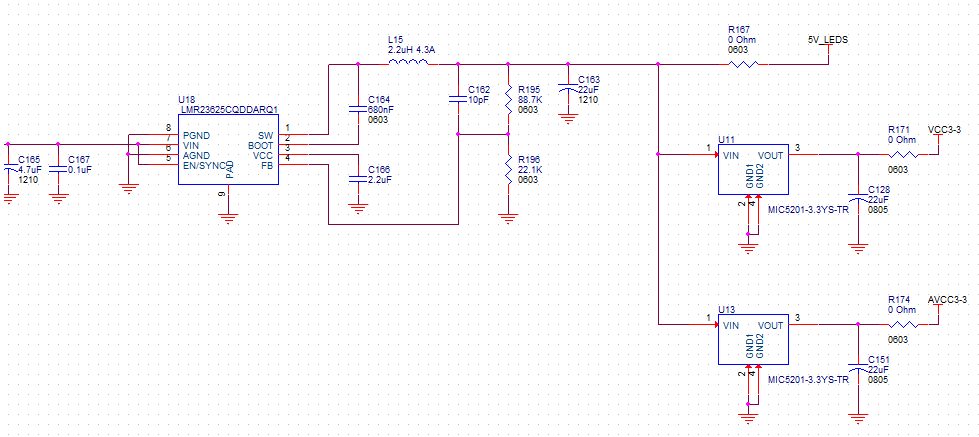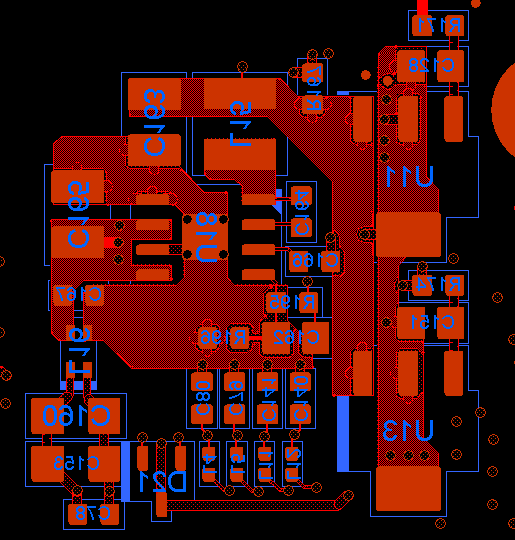Hi,
The system did not accept a schematic in my previous post.
I use the LMR23625CQDDARQ1 in a typical application.
The layout is according to recommendations in DS.
Input voltage = 24V.
Output voltage = 5V
Output current = 300mA.
The DC/DC, L15 and C163 heat up to 55 degrees Celsius.
Please suggest solution!


